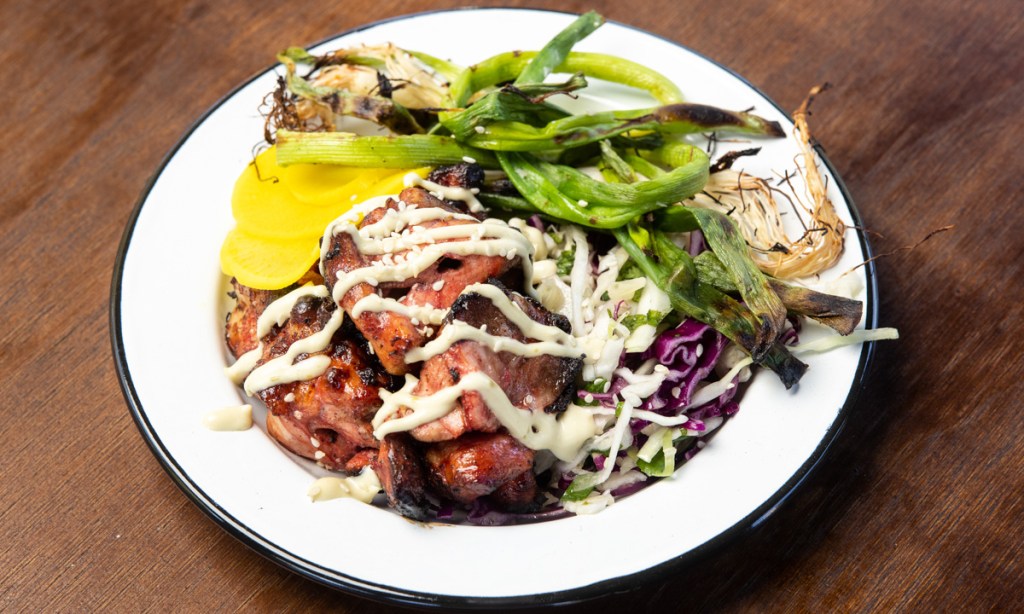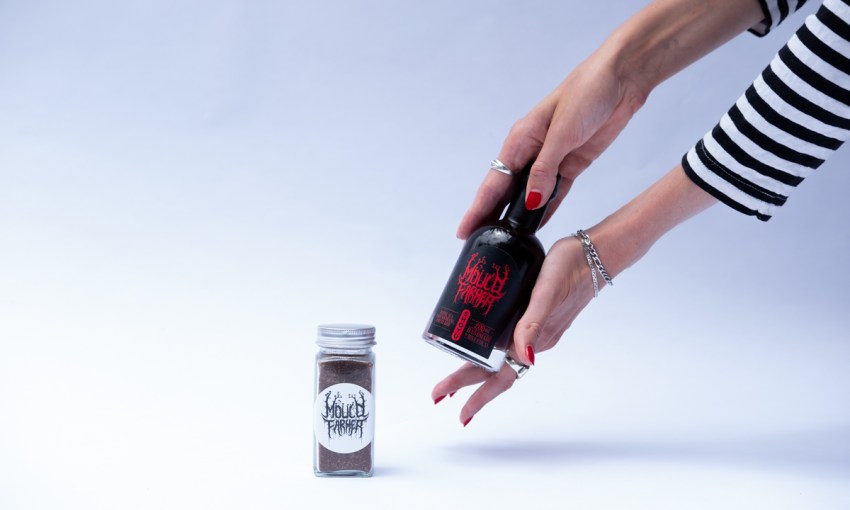It takes 18 months for chef John Stamatakis to make his Mould Farmer shoyu, but the quality of flavour is worth the wait.
Mould Farmer makes soy sauce the slow way
Chef John Stamatakis knows there’s a significant challenge before him in his fungal food enterprise, Mould Farmer.
Browse the Mould Farmer range here.
When we first met with John to talk about the project at its debut Tasting Australia appearance last year, the chef acknowledged Australian culture has not traditionally embraced mouldy fermentation as a flavour enhancer.
“My whole life I’ve been told that mould is a bad thing, it’s a sign of all these other things, you know, war on germs,” he told us at the time.
In establishing this business, which has mainly existed as a pop-up serving plates of vegetables and proteins affected by fermentation in some way, usually through the use of koji, John has had his advocacy cap on, plating up only the most palatable examples of the array of flavours made possible by mould.
The response from the crowds he’s served at Tasting Australia and his Royal Adelaide Show food stall, Breaker’s Saloon, have been positive, if cautious.
“I think fear and curiosity, and then overwhelmingly positive from a flavour perspective,” John says of his customers’ attitudes. “Even at the Royal Adelaide pop-up, there was koji all through that menu, it just wasn’t [written] on the menu, and people were saying, ‘That’s the best steak I’ve ever had, that’s the best chicken I’ve ever had’, and it’s because everything was marinated in koji in some way.”

A plate from Mould Farmer’s 2021 Tasting Australia pop-up with From Blammo
One of the more widely appreciated contributions koji has made to culinary history is soy sauce, which has become a fascination for John. Through Mould Farmer, he’s just released the first batch of his own shoyu, which was 18 months in the making.
The process begins with soy beans and wheat being inoculated with fungus and then put into a salt brine. John stirs the brine every week, tasting it intermittently. Once it hit the flavour profile he wanted, he pressed it off using a 10-litre cider press – which “took about four days”. (He says he has a better pressing method for the next batch.)
“It is a slow process; you’re mixing it every week at least, or more often,” John says. “Probably less than one per cent of soy sauce in Japan is still made this way. This is not the fastest or the most economical way to produce it.”
Slow and uneconomical is, weirdly, John’s preference. “Like, I used to shoot super8 film when I was a kid. It’s so stupid. So stupid,” he laughs. But it’s about more than deliberately putting up hurdles for the sake of it. It’s important to John to respect the traditional methods of making shoyu.
“I am a bit of a sucker for tradition. If there’s an old-school way, that’s kind of what I’m drawn to. Even though the koji industry in Japan is super high-tech at the moment, the process is still very, very traditional,” he says.
“I’d rather lean that way than shortcut way. A lot of these processes have been around for centuries and centuries, and [we’re] slowly learning why that is the case.”

John Stamatakis (right) with Justin Penman of From Blammo at Tasting Australia 2021
Mould Farmer’s shoyu is available online, with John describing the product as “usukuchi style”.
“A little bit less salty, what they would say is a shorter finish. It’s definitely a little bit lighter,” John says.
“It’s perfect with sashimi. Sashimi and gyoza,. And that’s the way it’s going to last longest as well. Just dip some tasty stuff in there.”
The Mould Farmer website also stocks mirin, which John suggests could be combined with the shoyu to create a ponzu sauce. “Get some nice mirin and some citrus juice or some vinegar and mix it together, again, as a bit of a dressing, is how I would recommend to enjoy it,” he says.
There is also a shoyu salt, which is the soy sauce dehydrated and combined with salt flakes (for when you need a shake of umami and straight-up MSG isn’t enough), and a beef garum.
John hopes to release a new batch of shoyu every six months, including a gluten-free version he has in the works currently, made using buckwheat, and will add other fermented products as the business progresses. He’s heading to Osaka, Japan in March next year to learn to brew sake at Daimon Brewery, which will be a future Mould Farmer project.
If you’d like to try before you buy, John will be popping up at Oddio from 9—11 December as The Greek Secret. He’ll have a range of Mould Farmer products with him. You can also pick up a bottle from The Fermentary if you happen to be in Melbourne.
Follow along with future releases by connecting with Mould Farmer on Instagram.




